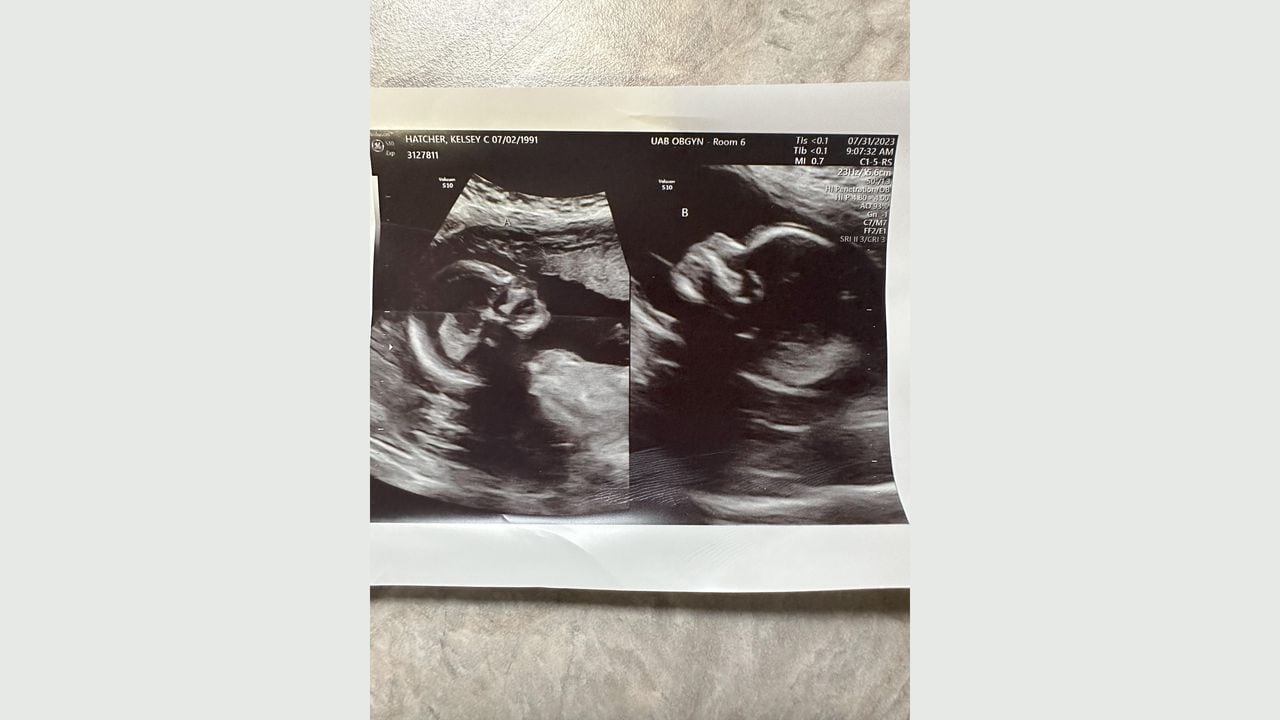âOne in a million chance:â Alabama woman with double uterus pregnant with two babies
When Dora resident Kelsey Hatcher went to her eight-week ultrasound to check on her fourth child, she let the ultrasound tech know about her rare condition, uterine didelphys, or double uterus. Hatcher said, “Well, there is only one of them, right?” The ultrasound tech responded with a laugh and said everything looked great, but she’d check her other uterus.
“As soon as she moved the ultrasound wand across my belly to the other side, I immediately saw it and exclaimed, ‘Oh my gosh. There’s another one!’” The 32-year-old massage therapist and mother of three will have her two babies around Christmas at the University of Alabama at Birmingham (UAB).
Because this was her and her husband Caleb’s fourth (and now fifth) child, she knew the routine and didn’t ask him to come along to get an ultrasound. He knew something was up when she called him within 15 minutes of the appointment time.
“You’re kidding me,” he told her. They started laughing together when she confirmed they were having a child in each uterus.
Her condition is rare. About 3 in 1,000 women have a double uterus and two cervixes, according to her OB/GYN and UAB associate professor Dr. Shweta Patel. Having a child in each uterus at the same time is extremely rare. Patel said it is a 1 in a million chance. Hatcher discovered the condition at age 17 and said that because she was a teenager, she wasn’t especially concerned about raising a family at the time.
The Hatcher family includes children who are 23 months, 4 years old, and 6 years old. They were carried to full term and had no complications. They weren’t planning on having a fourth, let alone a fifth child.
“We had gotten rid of all of our baby things,” Hatcher said. “So not only do we have to rebuy everything that we’ve gotten rid of, but we have to buy double. It’s been a wild time.” Hatcher said she’s grateful for hand-me-downs and resources like the Facebook marketplace. They’ve done “as much preparation as we can, but I think the biggest part of it will be just figuring out what life looks like when they’re here.” They’ve started a GoFundMe donation page to help with expenses.
Despite all the changes, Hatcher said she feels blessed and confident. Hatcher has had children in both uteruses in the past and believes the delivery process will go smoothly.
“I try not to dwell on it too much because it can get overwhelming and scary at times,” she said. “But I really do trust my OBs and the team that I’ve been given at UAB. They have been wonderful, even with the lack of knowledge that there is out there for them to study. They have been prepared for every doctor visit that I’ve been to and have made me feel very comfortable. They delivered my first and third child, and I just have great things to say about the team there. So I know I’m in good hands.”
“I think the biggest thing for us is that although I’m her primary OB, it is taking a team of people to help take care of her,” Patel said. She’s working with the maternal fetal medicine team who assists with high-risk pregnancies. “It’s definitely going to be a collaborative and team support to take care of her and her babies.” Patel is encouraged everything will go well, because Hatcher hasn’t had any serious complications.
Hatcher said the plan is to try and induce labor around Dec. 22 to give her body time to go through the birthing process.
Currently, she and her team are planning to have the babies vaginally. If there are any complications, then she may need to have one or both babies via Caesarean section.
Hatcher said she’s experienced typical pregnancy symptoms but noticed she felt a lot more tired in her first trimester and has been a lot more emotional.
“Overall, I’ve tried to keep a positive attitude and just know that this is a blessing and a miracle in itself and that we’ll be taken care of,” Hatcher said. “So just stay positive, work hard and keep moving.”
